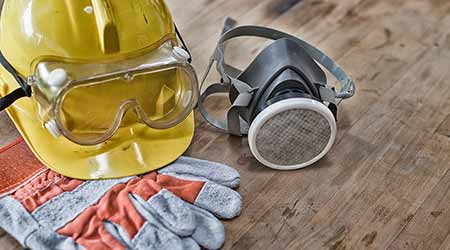PPE: Trend Watch
Effective worker protection goes well beyond gloves and goggles
The U.S. Occupational Safety and Health Administration (OSHA) requires that personal protective equipment (PPE) have sound design and construction. Most PPE has to conform to consensus standards referenced in OSHA standards. For instance, eye and face protection must comply with ANSI/ISEA Z87.1-2010/2003/1998, American National Standard for Eye and Face Protection.
Protective footwear must comply with ASTM F-2412: Standard Test Methods for Foot Protection and ASTM F-2413: Standard Specification for Performance Requirements for Protective Footwear. Managers should confirm the selected PPE meets consensus standards referenced by OSHA. In other cases, OSHA does not reference the consensus standards but provides important best practices that help with compliance. One example involves ANSI Z359 standards on fall protection equipment.
When evaluating PPE design and performance, managers should consider factors beyond minimum regulatory compliance, such as comfort, weight, and ease of cleaning. OSHA requires that managers make sure employees do not use defective or damaged PPE, so they also should consider durability and the cost and availability of replacement parts.
Another important issue is the versatility of the PPE. Protective clothing and gloves can provide protection against one type of hazard or a variety of hazards. A glove that costs 10 percent more might provide protection from numerous hazards that might reduce the number of gloves necessary to buy for worker protection. So it is important for managers to know all the potential hazards workers might encounter in the workplace.
One of the biggest areas of growth in PPE is style. Employees often seek eyewear not just for its protection but also as a fashion statement. PPE footwear also has gained popularity with workers. In the past, safety shoes were bulky, inflexible and uncomfortable. Today, it can be tough to distinguish protective footwear from fashion footwear.
Hard hats have also become a form of PPE that not only is more fashionable but lighter weight, better fitting, and more comfortable. So when selecting PPE, managers should try to find products that not only protect workers from hazards but also provide comfort, style and ease of wear.
— Jeffery Camplin
https://www.osha.gov/laws-regs/regulations/standardnumber/1910/1910SubpartIAppB
Related Topics:














